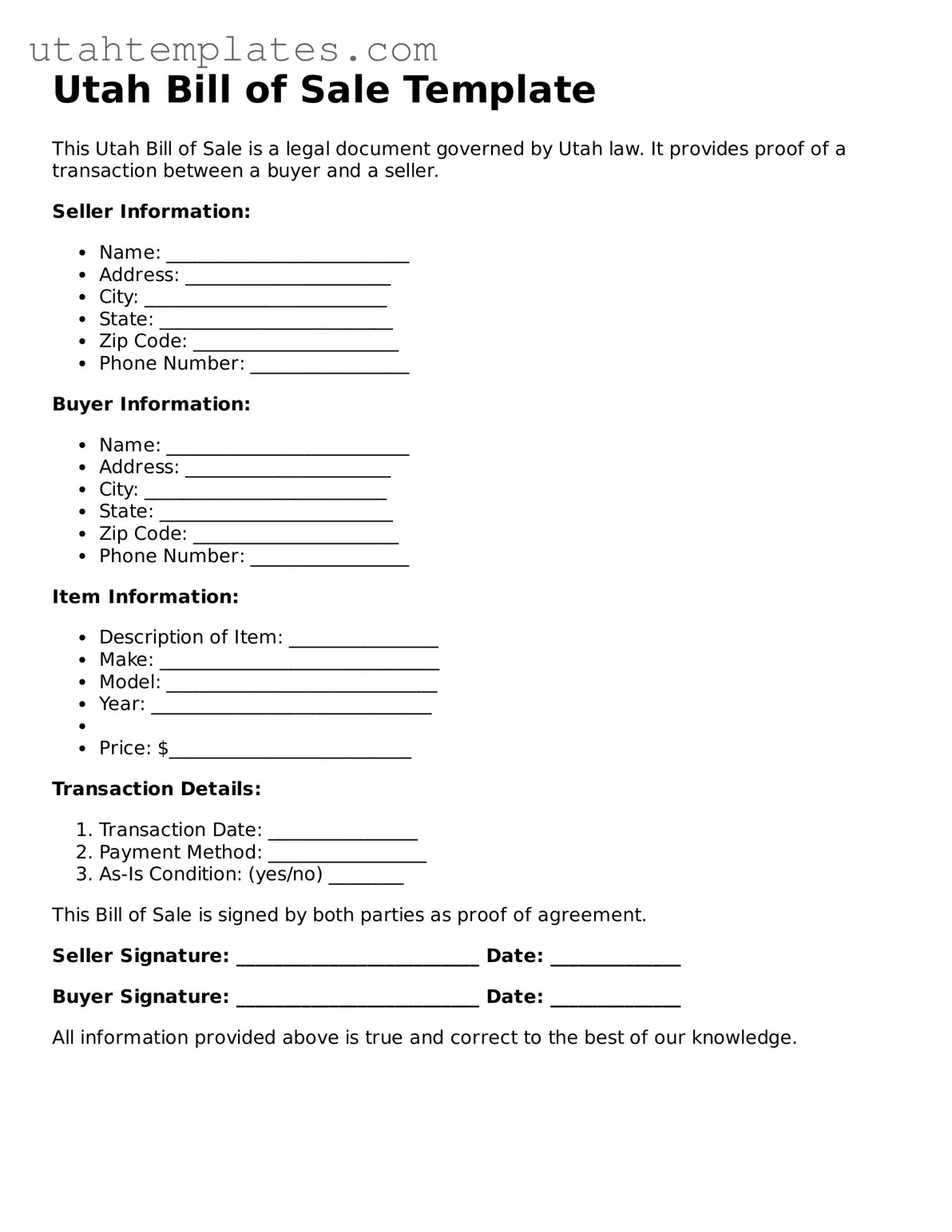When filling out the Utah Bill of Sale form, it's easy to overlook important details. One common mistake is failing to include all necessary information about the buyer and seller. Both parties should provide their full names, addresses, and contact information. Omitting any of these details can lead to confusion later on, especially if any disputes arise.
Another frequent error is neglecting to accurately describe the item being sold. The form should include a clear and detailed description of the item, including its make, model, year, and any identifying numbers, such as a Vehicle Identification Number (VIN) for vehicles. Without this information, it may be challenging to prove ownership or the specifics of the transaction.
People often forget to include the date of the sale. This may seem minor, but the date is crucial for establishing the timeline of ownership transfer. If a dispute occurs, having a documented date can help clarify when the transaction took place, which is essential for both parties.
Another mistake is not obtaining the necessary signatures. Both the buyer and seller must sign the Bill of Sale to validate the transaction. Failing to do so can render the document ineffective. It's also wise to have a witness or notarization, as this adds an extra layer of legitimacy to the agreement.
Finally, some individuals overlook the importance of keeping a copy of the completed Bill of Sale. After filling out the form, both parties should retain a signed copy for their records. This document serves as proof of the transaction and can be invaluable for future reference, especially if any issues arise regarding ownership or payment.
